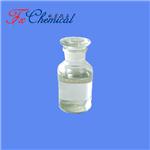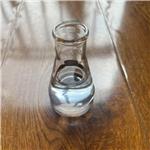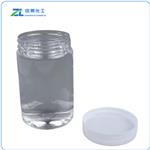Chemical Properties
Diethylene glycol monoethyl ether is a colorless, stable, hygroscopic liquid of a mild, pleasant odor. It is completely miscible with water, alcohols, ethers, ketones, aromatic and aliphatic hydrocarbons, and halogenated hydrocarbons. Owing to the fact that it contains an ether-alcohol-hydrocarbon group in the molecule, it has the power to dissolve a wide variety of substances such as oils, fats, waxes, dyes, camphor and natural resins like copal resin, kauri, mastic, rosin, sandarac, shellac, as well as several types of synthetic resins. It is used as a solvent in synthetic resin coating compositions, and in lacquers, where high-boiling solvents are desired.
Occurrence
Has apparently not been reported to occur in nature.
Uses
Usually used as solvent for the polymer electrospinning.
Uses
Diethylene glycol monoethyl ether has low setting point and low viscocity at low temperature so it is used in manufacturing brake fluid. It is used as a flow and gloss promoter in paint industries, in production of printing ink and as a cleaner in offset printing. Also used in textile as a solvent for dyestuff in the printing and dying of fiber & fabrics, in the production & wood preservaties.
Uses
Di(ethylene glycol) ethyl ether is suitable for use as solvent for the polymer electrospinning.
Definition
ChEBI: A primary alcohol that is ethanol substituted by a 2-ethoxyethoxy group at position 2.
Preparation
From ethyl alcohol plus ethylene oxide (Arctander, 1969).
General Description
A colorless, slightly viscous liquid with a mild pleasant odor. Flash point near 190°F. Used to make soaps, dyes, and other chemicals.
Air & Water Reactions
Slightly denser than water and soluble in water. Oxidizes readily in air to form unstable peroxides that may explode spontaneously [Bretherick, 1979 p.151-154, 164].
Reactivity Profile
Mixing 2(2-Ethoxyethoxy)ethanol in equal molar portions with any of the following substances in a closed container caused the temperature and pressure to increase: chlorosulfonic acid and oleum, NFPA 1991.
Health Hazard
None expected.
Fire Hazard
2(2-Ethoxyethoxy)ethanol is combustible.
Chemical Reactivity
Reactivity with Water : No reaction; Reactivity with Common Materials: No reaction; Stability During Transport: Stable; Neutralizing Agents for Acids and Caustics: Not pertinent; Polymerization: V; Inhibitor of Polymerization: Not pertinent.
Safety Profile
irritation, and unspecified eye effects, cough,
Metabolism
The major part of an administered dose of diethylene glycol monoethyl ether is oxidized in the body or excreted as the glucuronate, administration to rabbits orally or by sc injection being followed by a marked increase in the urinary content of glucuronic acid (Fellows, Luduena & Hanzlik, 1947).
Purification Methods
Ethylene glycol can be removed by extracting 250g in 750mL of *benzene with 5mL portions of water, allowing for phase separation, until successive aqueous portions show the same volume increase. Dry, and free from peroxides, as described for diethylene glycol mono-n-butyl ether. [Beilstein 1 IV 2393.]
Toxics Screening Level
The initial threshold screening level (ITSL) for diethylene glycol monoethyl ether (DGEE) is
1750 μg/m3 based on an annual averaging time.




